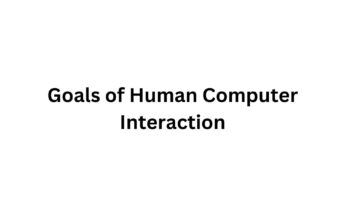The study of human-computer interaction (HCI) focuses on how people interact with computers and how computers are designed. Because it may be used to develop systems and interfaces that are more effective, efficient, and pleasurable to use, HCI is significant. Our lives may be significantly impacted by this, at work and at home.
Here are some of the key benefits of HCI:
- Improved productivity and efficiency. Well-designed HCI systems can help us to get things done more quickly and easily. For example, a user-friendly interface can make it easier for us to find the information we need or to complete a task.
- Reduced errors and frustration. HCI can help to reduce the number of errors we make when using computer systems. This can be important in safety-critical applications, such as air traffic control or medical devices. HCI can also help to reduce frustration, which can lead to improved job satisfaction and productivity.

Image Source: Just Flight - Increased accessibility. HCI can help to make computer systems more accessible to people with disabilities. For example, screen readers can help blind people to use computers, and voice-activated systems can help people with mobility impairments to interact with computers.
- Improved user experience. HCI can help to create computer systems that are more enjoyable to use. This is important for all types of systems, from video games to enterprise software. A good user experience can help to keep users engaged and motivated, which can lead to increased productivity and satisfaction.

HCI is used in a wide variety of industries, including:
- Software development: HCI principles are used to design user interfaces for software applications, such as web browsers, word processors, and video games.

Google Chrome offers a user friendly interface. - Web design: HCI principles are used to design websites that are easy to navigate and use.
- Product design: HCI principles are used to design hardware products, such as smartphones, tablets, and medical devices.

iPhone offers attractive designs - Education: HCI principles are used to design educational software and learning environments.
- Government: HCI principles are used to design government websites and services.
HCI is a critical field of study that can help to create computer systems that are more efficient, effective, and enjoyable to use. By following HCI principles, designers can create systems that benefit everyone, from individuals to businesses to society as a whole.
Here are some specific examples of how HCI is used in the real world:
- ATM machines: HCI principles are used to design ATM machines that are easy to use for people of all ages and abilities.
- Self-checkout kiosks: HCI principles are used to design self-checkout kiosks that are easy to use and can help to reduce wait times at grocery stores and other retail establishments.

A Person is Using a Self Checkout Kiosk. Image Credit: Auto Star - Medical devices: HCI principles are used to design medical devices that are safe and easy for doctors and nurses to use.
- Educational software: HCI principles are used to design educational software that is engaging and effective for students of all ages.
- Government websites: HCI principles are used to design government websites that are easy to navigate and use for citizens and businesses.
HCI is an important field of study that can help to make our lives easier and more efficient. By following HCI principles, designers can create computer systems that benefit everyone.










